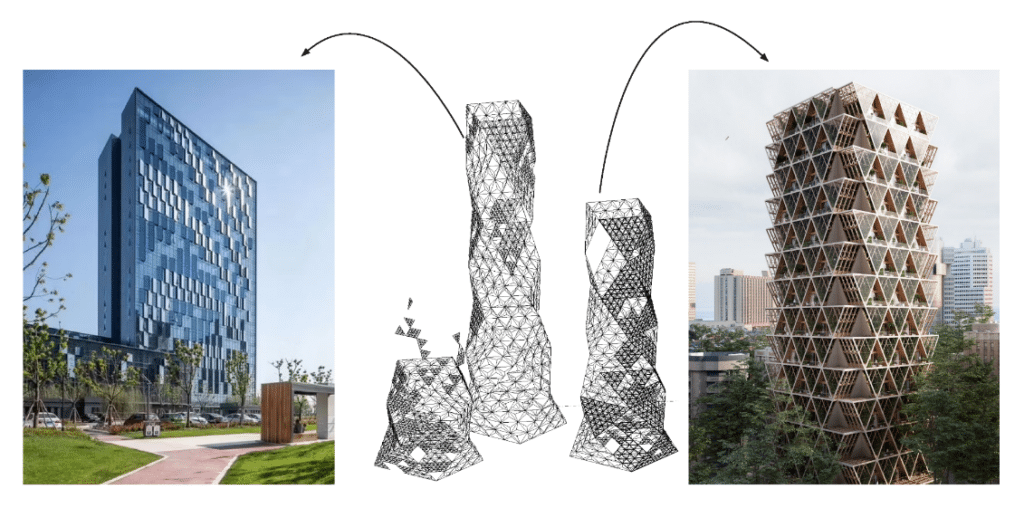ROLE
FINAL INPUTS AND OUTPUTS
TEAM ROLES AND COMMUNICATION STREAMS
COMMUNICATION COLLABORATION
REFLECTIONS
- Speckle: enabled real-time sharing of complex Grasshopper models across platforms, improving feedback cycles and team alignment.
- Enhanced version control ensured everyone worked on the latest file without duplication.
- Speckle: smooth integration between Grasshopper, Rhino, and Revit.
- Miro and Slack: kept communication organized — live updates made discussing concepts easier.
- Time zone differences caused scheduling conflicts and communication delays.
- Heavy file sizes slowed down processing despite using Speckle.
- Hardware limitations forced simplification of complex panel geometry to handle large-scale designs.
- K-Means clustering produced overly large panel groupings, requiring significant refinement for constructibility.
CARBON FOOTPRINT OBJECTS TRACKER APP
We imagined a smarter way to design façades—one that doesn’t just generate new materials but maximizes the potential of what already exists. That’s why we developed a custom parametric tool that helps architects and designers track, organize, and reuse façade components in a way that’s both sustainable and adaptable. By embedding life cycle assessment (LCA) data into the process, our system ensures that materials are repurposed efficiently, reducing waste while maintaining design flexibility.
To make this work, we built a digital workflow that seamlessly integrates with computational design tools. Our system extracts façade elements from the hyperbuilding, categorizing them based on their geometric characteristics and material properties. These components are then reconfigured and applied to a new project, ensuring that valuable materials are not discarded but given a second life in a completely different design.
In this case, the hyperbuilding acts as a resource, providing reusable façade elements that are parametrically reassigned to fit the needs of another project. This approach transforms the way we think about materials—no longer as static components but as adaptable assets in a continuous cycle of use. By embedding circular design principles into the process, we make façade reuse a seamless and intelligent part of sustainable architecture.

OPTIMIZING THE DONOR
PROCESS OF LIBRARY CREATION
PROCESS OF LIBRARY CREATION

